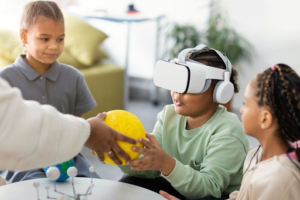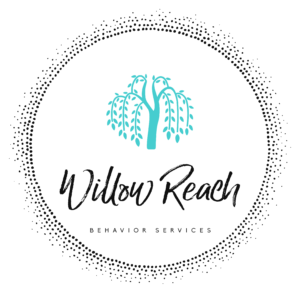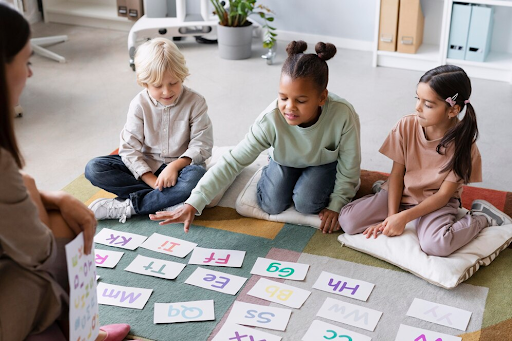Behind every diagnosis is a story of families searching for answers, a child trying to find connections, and a community that is eager to step in with the best help we have.
For years now, center-based ABA (Applied Behavior Analysis) therapy has been the mainstay of autism treatment. What is very exciting at present is the way it is evolving.
Gone is the one-size-fits-all model. Presently, ABA therapy centers are adopting an innovative and compassionate approach that did not see as much of the light in the past.
We see centers that are including tech in unique ways, tailoring treatments to the individual’s personality, which before may have been a more by-the-book approach. Also, we are seeing greater family involvement, which in the past was not as present.
Center-based ABA is in a state of evolution, and it is happening at great speed.
In this blog, we will take you through the great trends, tools, and changes that will shape the future of autism therapy centers. We will do so not in terms of jargon or buzzwords but in very human, hopeful, and real terms.
Every child deserves success, and the advancements in behavioral therapy are significantly enhancing this aspect.
The Landscape of Center-Based ABA Therapy in 2025
In present-day ABA therapy centers, you may see a very different picture. What used to be clinical settings are now designed like playrooms. Interactions are more natural.
Therapists are not just working with data; they are also working with hearts, personalities, and stories. This is the new look of center-based ABA therapy in 2025.
So, what’s changed?
At the heart of the matter, therapy has become more people-focused. We see each child for who they are, beyond their challenges. We look at their interests, strengths, sensory inputs, and learning styles.
Therapists are out of the rigid routine and uniform program box. Instead, they are free enough to creatively adapt sessions in the moment, which in turn keeps each child engaged, at ease, and very much supported.
Another thing we have seen is a great increase in the role of family in treatment. Currently, we observe that parents, caregivers, and siblings are taking on very active roles. Family coaching, caregiver support groups, and regular feedback are not peripheral elements; they are a main component of what we do.
Centers are also reporting that they are putting together social experiences in addition to therapy sessions. We see more small peer groups, structured playdates, and social skills clubs within the center setting, which in turn is helping to build up the confidence of the kids and also getting them to form meaningful connections with other age-appropriate peers.
In 2025, we perceive ABA clinical practices not as a starting point, but as a complete evolution. Therapy is growing into a more human approach, is more hopeful, and is better aligned with what every child really needs for success.
Technological Advancements Enhancing ABA Therapy
In 2025, tech isn’t taking over the role of the therapist; it’s enhancing what they do. From easy session organization to improved communication for kids, here is how technology in ABA therapy is bringing about more in-depth, efficient, and personal results:

- Data Collection Tools That Help: Say farewell to archaic paperwork. Today’s ABA centers are using tablets and cloud-based software, which allows therapists to track behaviors, progress, and goals as they happen. These tools also save time and improve the accuracy and timeliness of the data, which in turn makes it easier to modify strategies as a child’s needs change.
- AI-Assisted Session Planning: Artificial intelligence is used for the analysis of past session data, which in turn puts together personal lesson plans. We see that this is a way for therapists to design routines that are fresh and focused, which in turn makes each child’s learning path dynamic and relevant.
- Telehealth as a Supportive Bridge: Hybrid models are the trend. Although in-person sessions are still the mainstay, we see many centers also providing telehealth for parent training, progress reports, or even short check-in sessions on tough days. It is flexible care that weaves into the family’s lifestyle without breaking the connection.
- Wearable Technology for Sensory Insights: Some programs are looking at child-oriented wearables that track heart rate or movement. These tools are put in place to report when a child may be feeling overwhelmed, anxious, or at ease, which in turn allows for more tailored, supportive interventions.
- Gamified Learning Platforms: Children do well with play, which is what ABA centers are into. We see that in interactive apps, digital games, and reward-based platforms, which make skill-building fun at the same time, they maintain therapeutic value. Also, these tools do very well for generalization and motivation.
- Virtual Reality for Social Practice: A few progressive centers are also trying out VR settings in which kids may safely practice real-world situations – going to a grocery store, ordering food, or a playdate at the park, with therapist support.
New Methods and Updated Models in Center-Based ABA
In 2025, we are to see a growth in ABA approaches that are more tailored and take into account each child’s speed and that do not force them into a certain mold. What we are observing is this:
- Naturalistic Teaching Approaches: Today, we see that play, conversation, and daily routines are the settings in which sessions take place, not just at the table. Also, this is a way for kids to use what they learn in real life.
- Strength-Based Programming: Modern models not only identify a child’s improvement areas but also highlight their strengths and how to build on them, which boosts confidence and introduces new skills.

- Shorter, More Frequent Sessions: Micro sessions are on the rise. They improve focus, and they are also easier to work into even the busiest of family routines.
- Interdisciplinary Collaboration: ABA centers are reporting to work with speech, OT, and mental health professionals like never before – we are seeing very comprehensive care plans that support the whole child.
- Cultural and Neurodiversity Sensitivity: There is a shift to including a wider range of family values, cultures, and neurodiverse identities in therapy.
In ABA for autism, we are seeing a shift toward more ethical, inclusive, and effective therapies, which also happen to support rather than just manage behavior and foster lifelong development.
Comparative Analysis: Traditional vs. Modern Center-Based ABA Therapy
| Aspect | Traditional Center-Based ABA | Modern Center-Based ABA (2025) |
| Therapy Style | Structured, table-based instruction | Naturalistic, play-based, and flexible |
| Session Focus | Reducing challenging behaviors | Encouraging strengths, building skills, and supporting emotional growth |
| Parental Involvement | Limited to progress updates | Actively involved through coaching, collaboration, and goal-setting |
| Use of Technology | Minimal or paper-based data collection | Advanced tech tools, real-time data, AI planning, and digital learning aids |
| Customization | One-size-fits-all programs | Personalized plans based on the child’s interests, needs, and learning style |
| Cultural Sensitivity | Often overlooked | Emphasized, with respect for diverse backgrounds and neurodiversity |
| Environment | Clinical, therapy-focused setting | Welcoming, child-friendly, often resembling play and learning environments |
| Social Development | Secondary priority | Central to programming through group play, peer interaction, and community |
| Therapist Role | Instructor and behavior manager | Supportive coach, advocate, and flexible problem-solver |
Willow Reach ABA: Flexible, Family-Centered Support
Willow Reach ABA provides very personalized and compassionate ABA therapy in homes and at our upcoming centers, which we know works best for each of your unique situations.
- Delivered in a home setting, we tailor to the child’s routine.
- Families play a key role in therapy, which in turn reduces stress, and we see a fun, supportive environment.
- Skills are learned best at home and in the community.
Center-Based ABA Therapy:
- To meet high demand, Willow Reach ABA is opening its first clinic.
- The center provides a framework of in-depth social and academic growth.
- Ideal for families looking for in-depth interactive experiences.

Our therapy includes five main areas:
- Family relationships
- Social interaction
- Emotional health
- Educational support
- Community inclusion.
This focused and personal approach, which in turn makes each child feel seen, supported, and empowered at where they are on their journey.
The Future of Autism Therapy Centers: Looking Ahead
Autism therapy is in a new phase, which is that of greater inclusion, connection, and focus on the child.
- Total Child Care: Modern facilities have designed spaces that are sensory-friendly, play zones, and calming areas, which in turn support emotional well-being and comfort.
- Integrated Health Care: Therapists are working with speech, occupational, and educational professionals to provide a full picture of care.
- Intelligent use of technology: In the present time of real-time data tracking, we see that in ABA therapy, technology is also supporting the growth of personalized learning apps, which in turn help teams to make faster and more informed decisions.
- Practical Focus: Today’s centers are putting into practice what they preach – in schools, in communities, and in the everyday in which we live – thus making support more real and present.
- Expanding the base of users: As demand increases, we are seeing more centers open in underserved areas, which also present a wider range of cultural and inclusive services for all families.
A Future Rooted in Possibility
As we move forward, it is also true that the growth of center-based ABA therapy goes beyond the adoption of new tools and techniques. It is about creating a world that includes and values each of our children. With compassion as our guide, there is enormous promise on the horizon.
Frequently Asked Questions (FAQs)
- Can ABA work for older kids and teens with autism?
Yes. ABA is very flexible in age range and what it works for. For older kids and teens, we see that goals tend to be centered around building independence, social skills, communication, and practical life skills like time management and navigating school.
- How many hours of ABA therapy does my child require for it to be effective?
Therapy duration is based on what your child requires. We see some do well with 10 to 15 hours a week, while others may be in for 30 or more. A trained BCBA will evaluate and put together the best plan for your child’s goals and progress.
- Will Willow Reach ABA support parents and caregivers during therapy?
Absolutely. Willow Reach ABA is a proponent of caregiver inclusion, which they achieve through regular updates, training, and collaborative planning. We see to it that families are equipped with what they need to succeed in and out of therapy.
Stay tuned to Willow Reach ABA for tips, updates, and inspiring stories. Follow us on Instagram and Facebook and join our supportive community!
